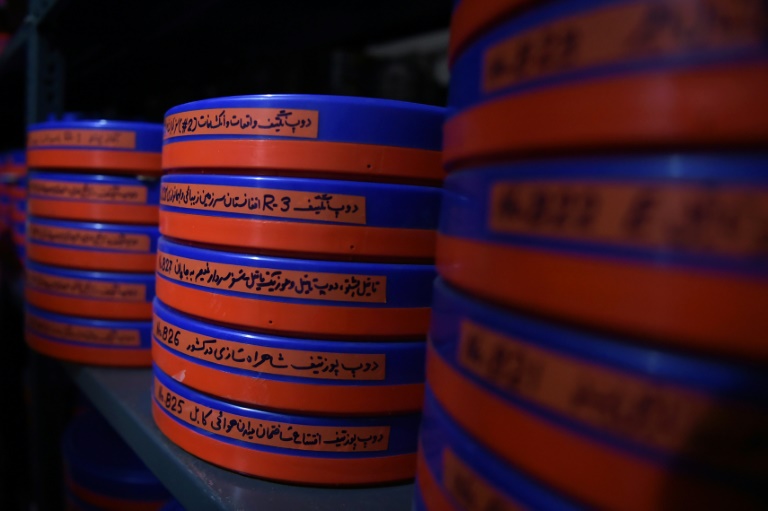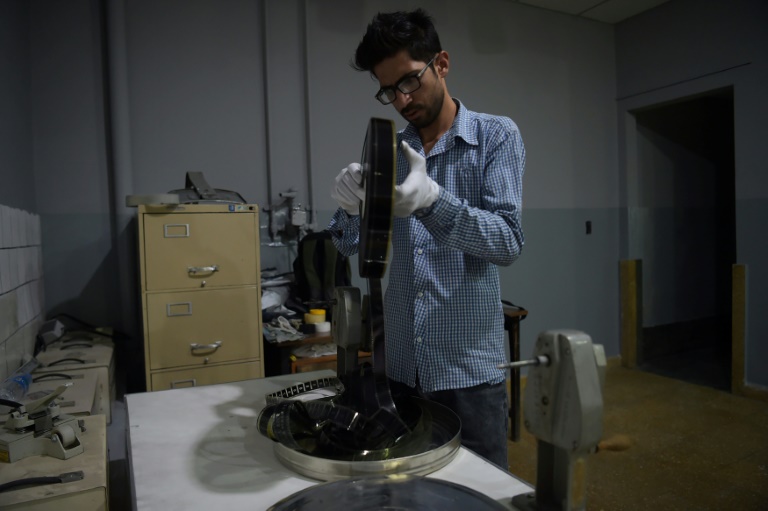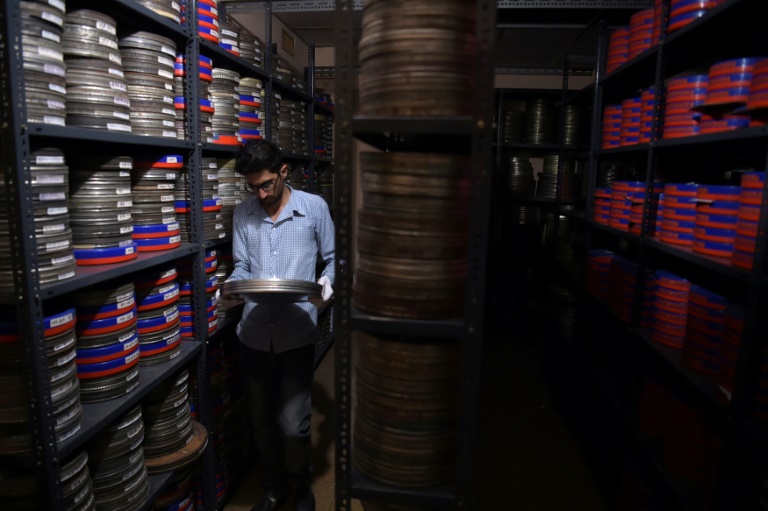ANC member not backing down in fight against Paul Mashatile
He hid thousands of reels of footage showcasing Afghanistan’s rich cultural history, knowing that if the Taliban found out he faced certain death.
“We did not expect to leave for our homes that day alive,” Ali tells AFP, clutching a saved reel. “If they had found out we had hidden movies they would have killed us.”
The ultra-conservative Taliban — who banned popular entertainment, including cinema and music, during their brutal 1996-2001 rule — burned several movie reels before leaving.
But they failed to discover some 7,000 precious films that Ali and his colleagues hid in various places across the Kabul premises of Afghan Film.

Some 7,000 precious films were saved from the Taliban by employees at Afghan Film in the mid-1990s. Two decades later those reels, which include long-lost movies and historic documentary footage are being made available to watch again
Two decades later those reels, which include long-lost movies and documentary images of Afghanistan before it was ravaged by violence, are being made available to watch again through digitisation.
The years-long project will bring back to life hugely popular Afghan feature films, centred on love rather than war, and introduce young Afghans to a side of their country they’ve never known — peace.
“We were very scared but by God’s grace we were able to save the movies and now we have this culture alive,” says the 60-year-old Ali, who has worked at Afghan Film for 36 years.
– ‘All sorts of tricks’ –
The digitisation of the footage — of which there are tens of thousands of hours — is being overseen by Afghan Film general director Mohammad Ibrahim Arify.
“The reels were hidden in cans marked Indian or Western movies and in barrels buried in the ground,” Arify tells AFP.
“Many were stored in rooms blocked by a brick wall and in fake ceilings. They used all sorts of tricks,” he adds, smiling.
Arify says they have 32,000 hours of 16-millimetre film and 8,000 hours of 35-mm film, but cataloguing is still ongoing, as members of the public continue to hand in movies that they themselves hid from the Taliban.

“We are very proud of what we are doing because we are bringing the dead culture of Afghanistan to life by transferring the visual history of this country to digital,” one Afghan Film worker told AFP
“I can’t say whether we will finish with 50,000 or 100,000 hours,” he says, surrounded by shelves stacked with round silver tins containing the reels.
The digitisation process is a time-consuming one.
First the reels are cleaned to remove dust and any scratches.
Then the film is watched using a projector. Its name, date and reel number are catalogued, and it is classified as a movie or documentary.
Finally the reel is run through a machine which transfers it into digital form, frame by frame.
“If it’s a feature length movie the whole process can take up to four days. If it’s news images then just one day,” says employee M. Fayaz Lutfi.
The project began this year and Arify hopes the entire library can be completed within two years.
“We are very proud of what we are doing because we are bringing the dead culture of Afghanistan to life by transferring the visual history of this country to digital,” Lutfi, 27, tells AFP.
– ‘Moving backwards’ –
Afghanistan’s state-produced movies of the 1970s were hugely popular among Afghans. The Farsi and Pashto-language films focused on themes of romance, culture and friendship.
The documentary footage dates from the 1920s to the late ’70s — before the Soviet invasion, the brutal civil war, the Taliban rule, the 16-year US-led fight against insurgents and the recent Islamic State group attacks on Shiites.
At a recent screening at the US embassy in Kabul’s heavily-fortified green zone, a selection of images showed a thriving Afghanistan starkly different to the war-weary nation of today.

At a recent screening at the US embassy in Kabul’s heavily-fortified green zone, a selection of images showed a thriving Afghanistan starkly different to the war-weary nation of today
Laughing families were seen having picnics in parks, women wearing short skirts were seen joking while there was no sign of the blast-proof concrete walls that now blot Kabul’s landscape.
“I was emotional watching those images because I only have bad memories of my country. I was not lucky (enough) to live during those times,” 34-year-old Arif Ahmadi told AFP afterwards.
“In other countries people are moving forward but if you look at our past we are moving backwards,” he added.
Afghan Film hopes broadcasters will air the old movies and footage, while a private media group has plans to make a web channel.
Despite insurgents, including a resurgent Taliban, running or contesting around 40 percent of Afghanistan’s territory the department plans to organise screenings in remote villages without TV or internet.
For older Afghans the films would be a reminder of happier times and for the young generation, a glimpse of Afghanistan’s peaceful past that may help raise hope for its future.
Arify says: “We will take the risk to go to every corner of the country. We want our children to learn how Afghans used to live.”
Download our app